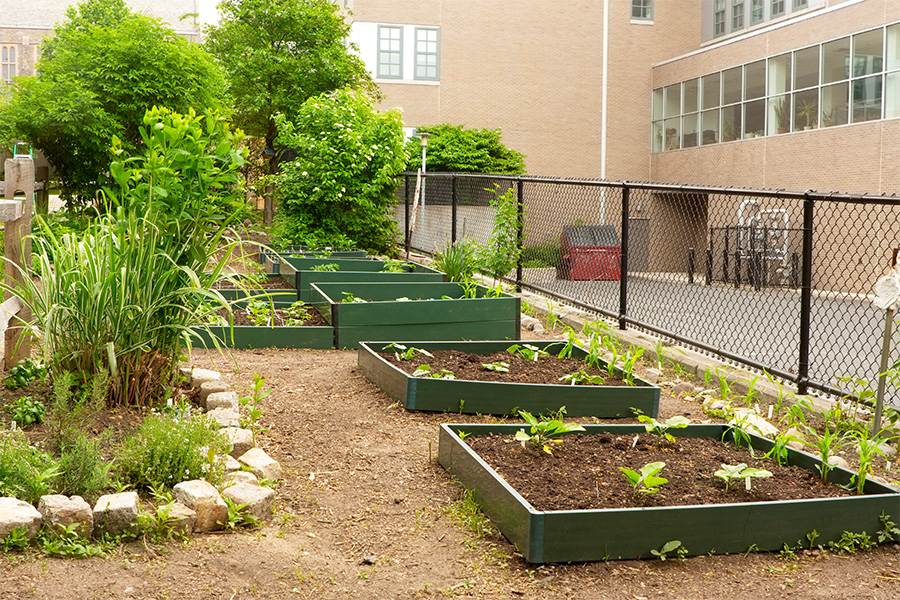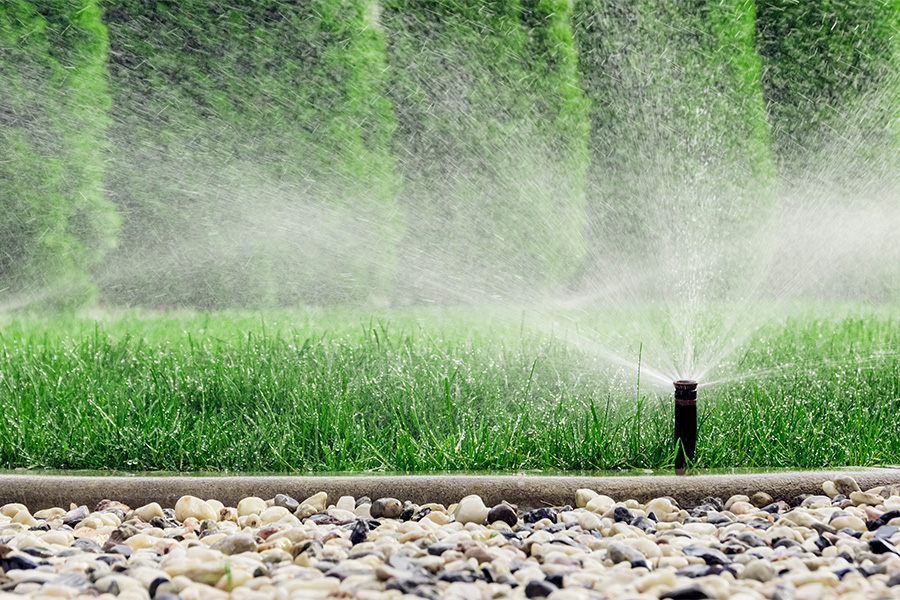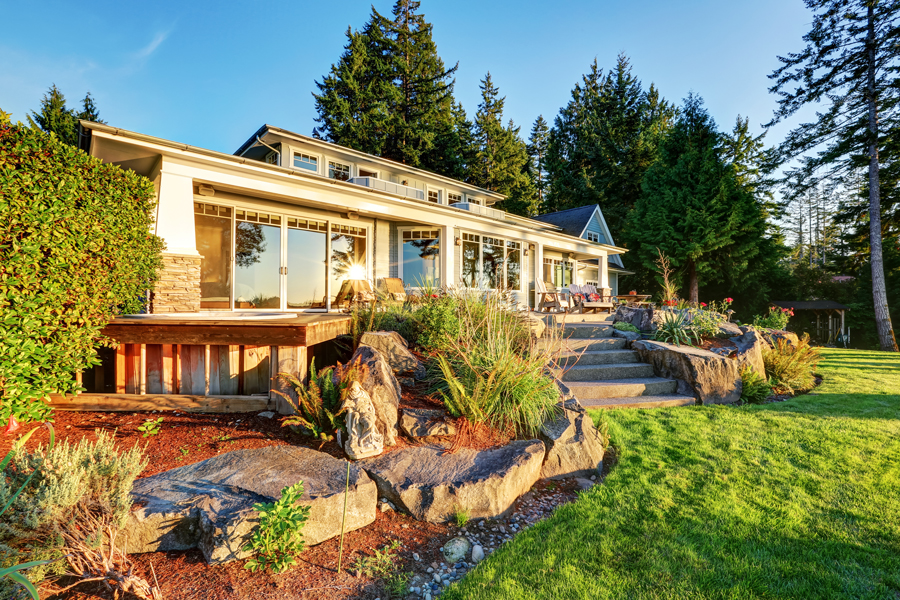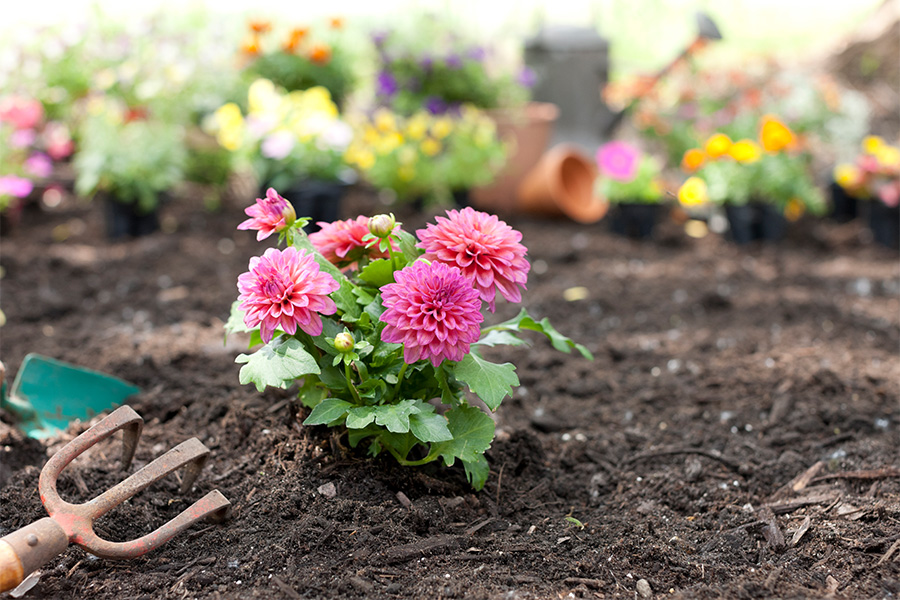Landscaping
-

C 1027-3
Raised Beds vs. In-Ground Gardens
This publication describes the advantages and disadvantages of raised bed and in-ground gardens and may be used as a guide when planning a community or school garden project.
Bob Westerfield and David Berle
|
-

Selecting a qualified irrigation contractor is very important. There are many irrigation products available and the installation process requires skill, knowledge and equipment. This publication outlines general considerations for purchasers of a landscape irrigation system. It also underscores the importance of considering the cost of water when selecting a contractor and protecting desirable trees during the installation process.
Gary L. Hawkins
|
-

The landscape is a very important aspect of a home. Having a beautiful, creative and functional landscape requires some understanding of design principles, plant materials and outdoor structural elements. A landscape installation can be very simple or extremely complicated. Designing irrigation systems, outdoor lighting, stone walls and patios requires skills that go beyond those of the average homeowner. When the job seems too big, it may be time to call in a professional. This publication provides guidelines and suggestions for finding a garden designer.
David Berle
|
-

C 1032-2
Working with a Garden Designer
Designing a landscape is much like designing the interior of a house. Colors, patterns and textures must be arranged in a manner that is functional and suits the taste of the owner. The one major difference with landscape design is that most of the elements are living, providing seasonal change, forever growing taller and wider, and occasionally dying. An experienced garden designer has the ability to incorporate all this information into the design, but the homeowners must do their homework and be prepared to talk to the designer. This publication will help homeowners develop a plan for working with a landscape designer.
David Berle
|
-

Preparing a landscape plan can be an enjoyable and satisfying experience if you do a little homework and follow a few guidelines. A simple landscape base map can be drawn without a computer, special software or even expensive drafting supplies, and is the first step in developing a landscape plan. The base map is an accurate representation of the existing landscape, scaled to fit the paper, showing information such as house dimensions, distance to street, and the location of trees,
woods, driveways and sidewalks, if these are already present in the landscape. This publication explains how to draw a base map for landscape planning.David Berle
|
-

Designing a beautiful landscape for the home can be a very enjoyable and satisfying experience. With a little homework, a landscape plan is within reach of most homeowners. Before great ideas can become a plan, you must determine the limitations and assets of the site. This publication briefly describes how to create a site analysis for landscape design.
David Berle
|
-

C 1260
Azalea Bark Scale
Azalea bark scale (ABS) poses a serious threat to azaleas, rhododendron, and Pieris (Andromedas) in Georgia. ABS is a soft scale insect; the nymph and female soft scales secrete a protective coating of waxy crust on their body that cannot be separated from the scale insect. ABS also is found on blueberry, hawthorn, huckleberry, poplar, and
willow. ABS is found in cracks or crevices in the surface of the bark, and also in areas where azalea branches fork. ABS can undergo two generations per year in Georgia.
Symptoms of ABS infestation include dropping yellow leaves and dying branches. Developing nymphs and females excrete a sugary syruplike liquid called honeydew on to the bark and leaves. As time passes, the surface of the bark, and sometimes the leaves, turns black because it gets infested with a sooty mold fungus that
feeds on the sugary secretions. The white crusts of scale insects are easily visible when the azalea bark turns completely black. An ABS infestation rarely kills the plant unless it is extremely severe and uncontrolled.William G. Hudson and Shimat V. Joseph
|
-

The goals of these investigations were to achieve an aesthetically pleasing landscape while experimenting with mixing various plant habits, leaf textures and colors, and even flowers, and to raise consumer awareness, both at industry and public levels, of the alternative uses of tropical plants in the landscape. This publication presents plant performance data collected over a three-year period in trials from two different Georgia environments, a coastal area and a mid-state area.
Paul A. Thomas, Allan M. Armitage, and Bodie V. Pennisi
|
-

Annuals are the mainstay color plant of many home gardens. They are also used in increasingly large numbers in commercial and municipal landscapes because they provide landscape color in a very short time with minimal investment. Properly cared for, many annuals will brighten the landscape continuously from spring until frost kills them in the fall.
Paul A. Thomas and Bodie V. Pennisi
|